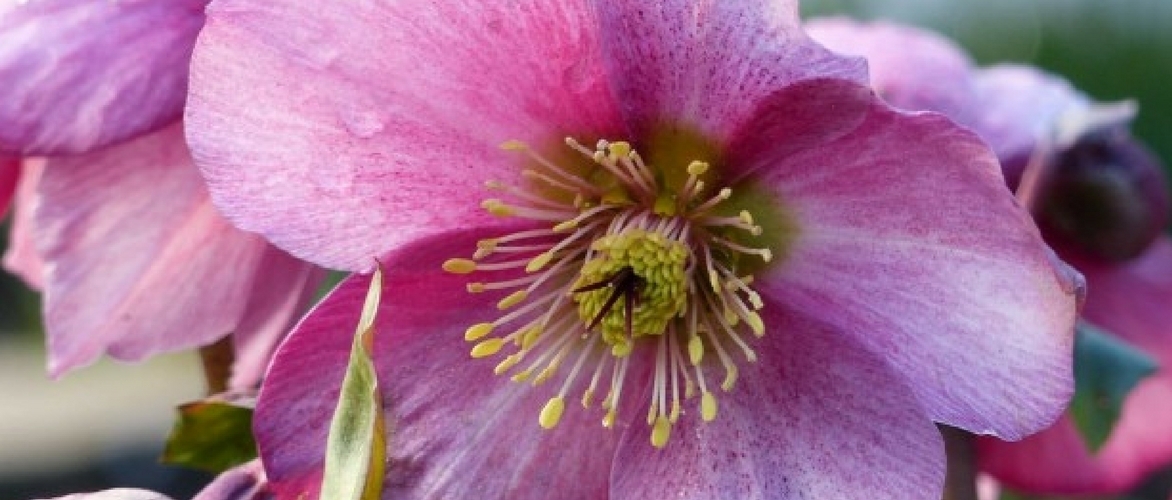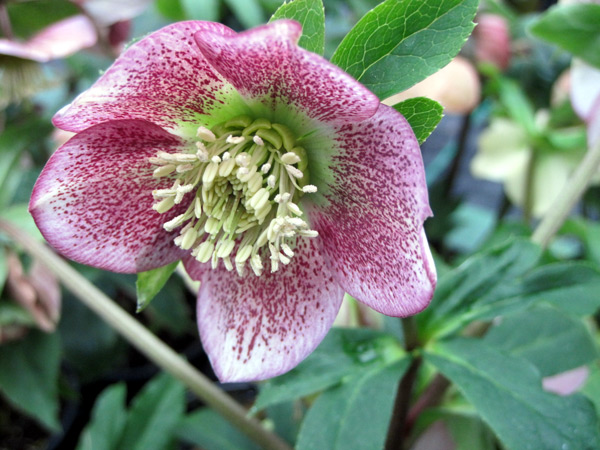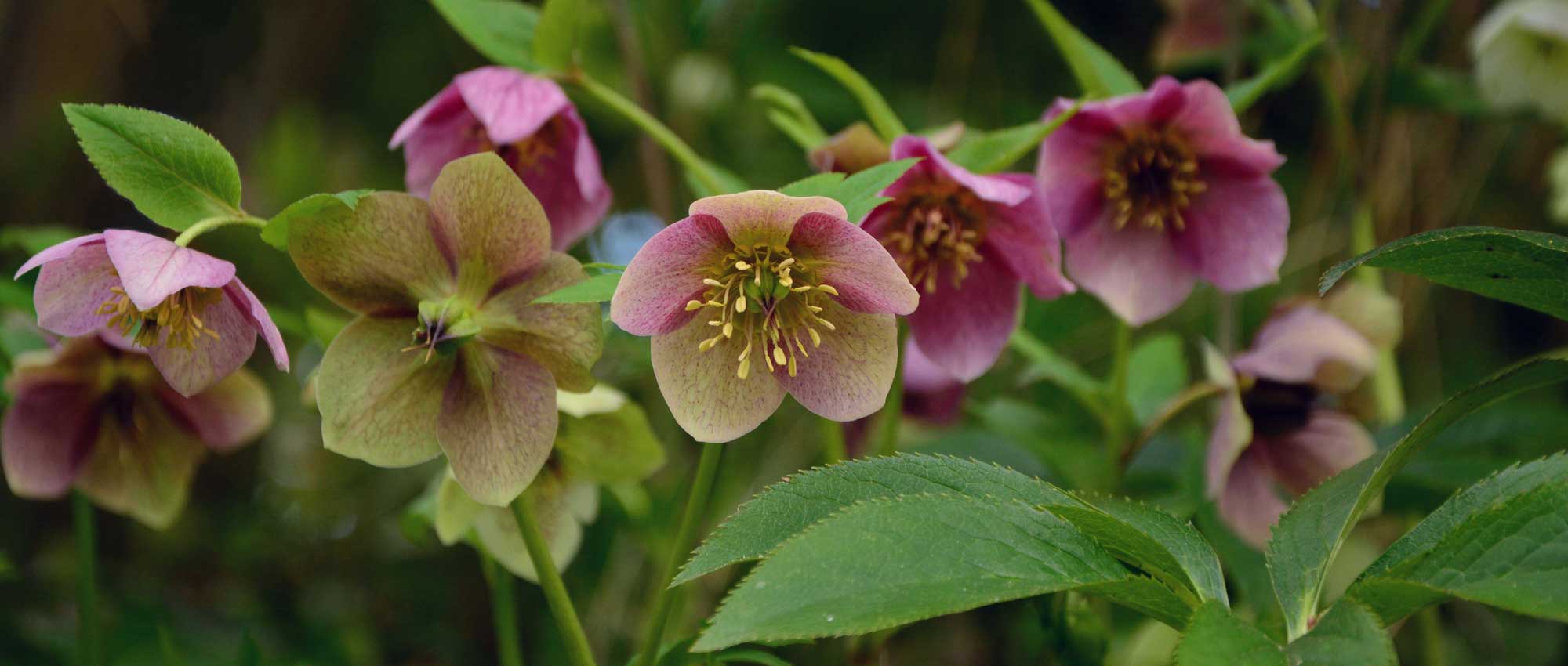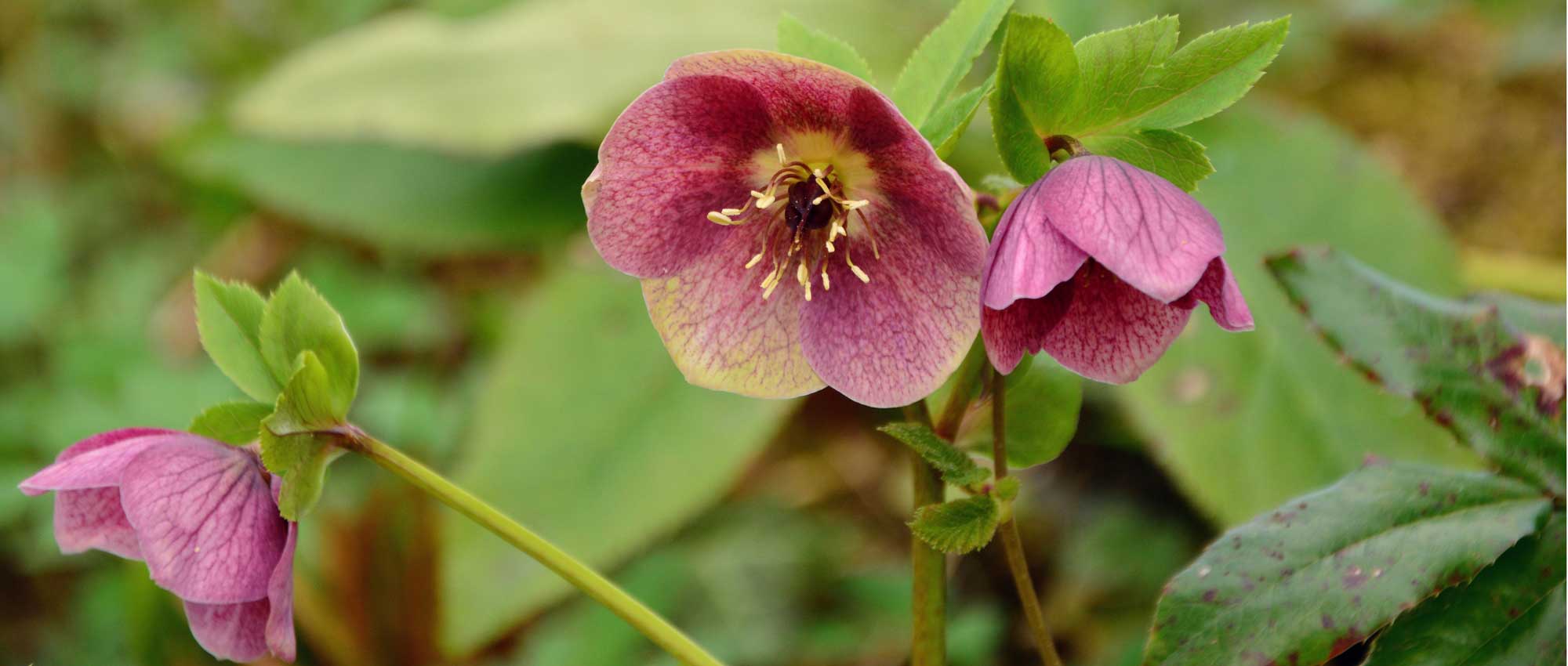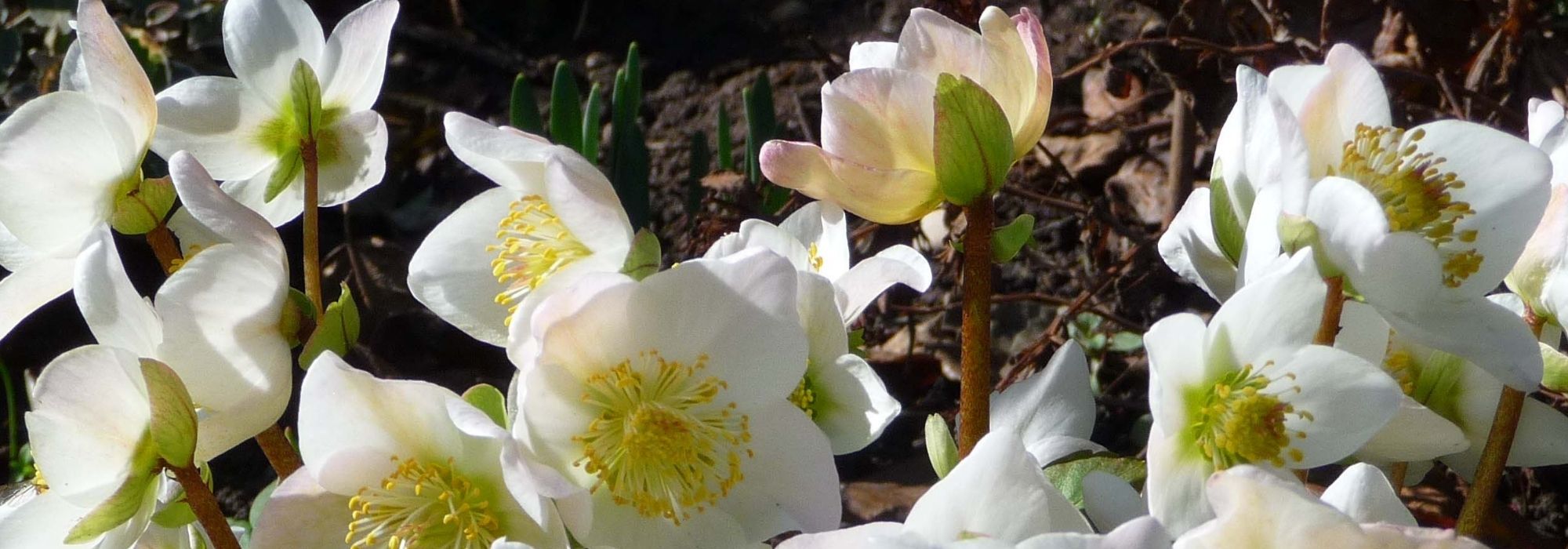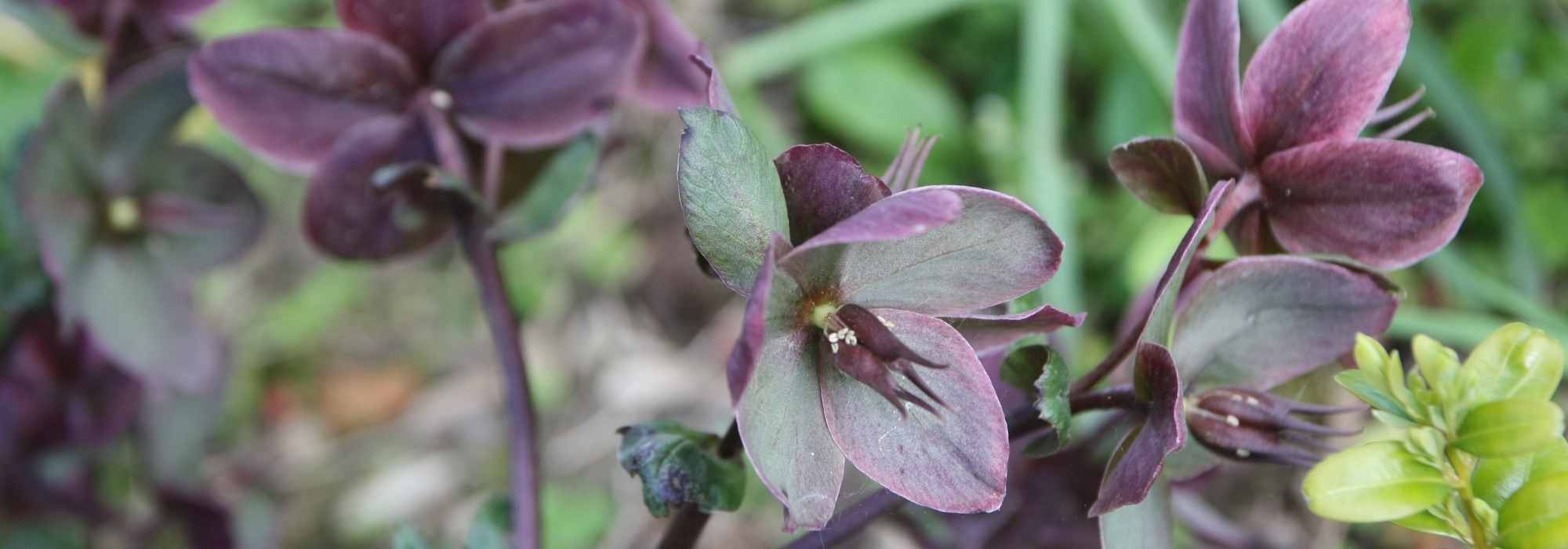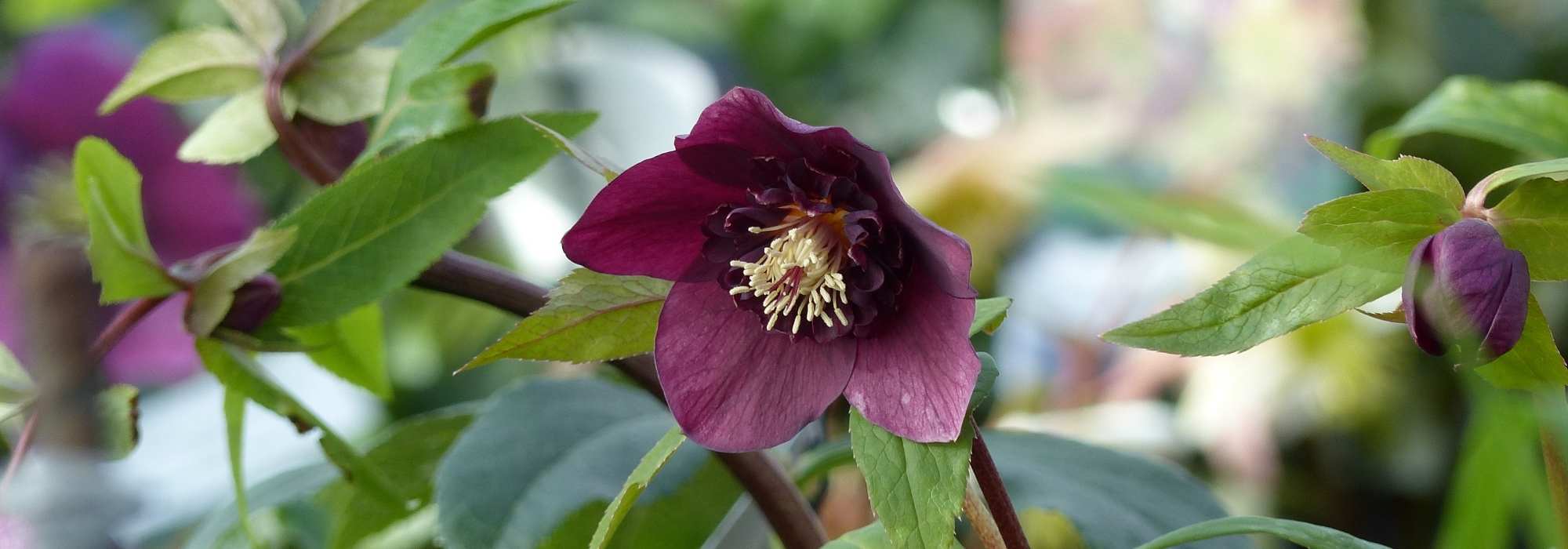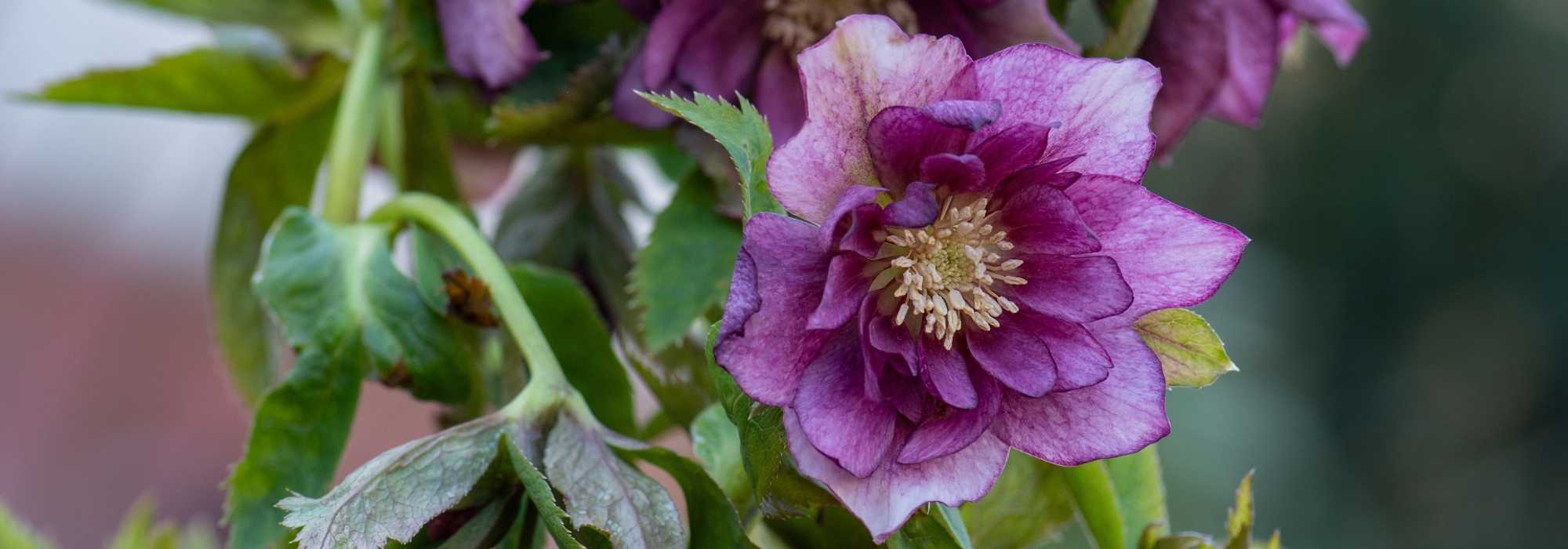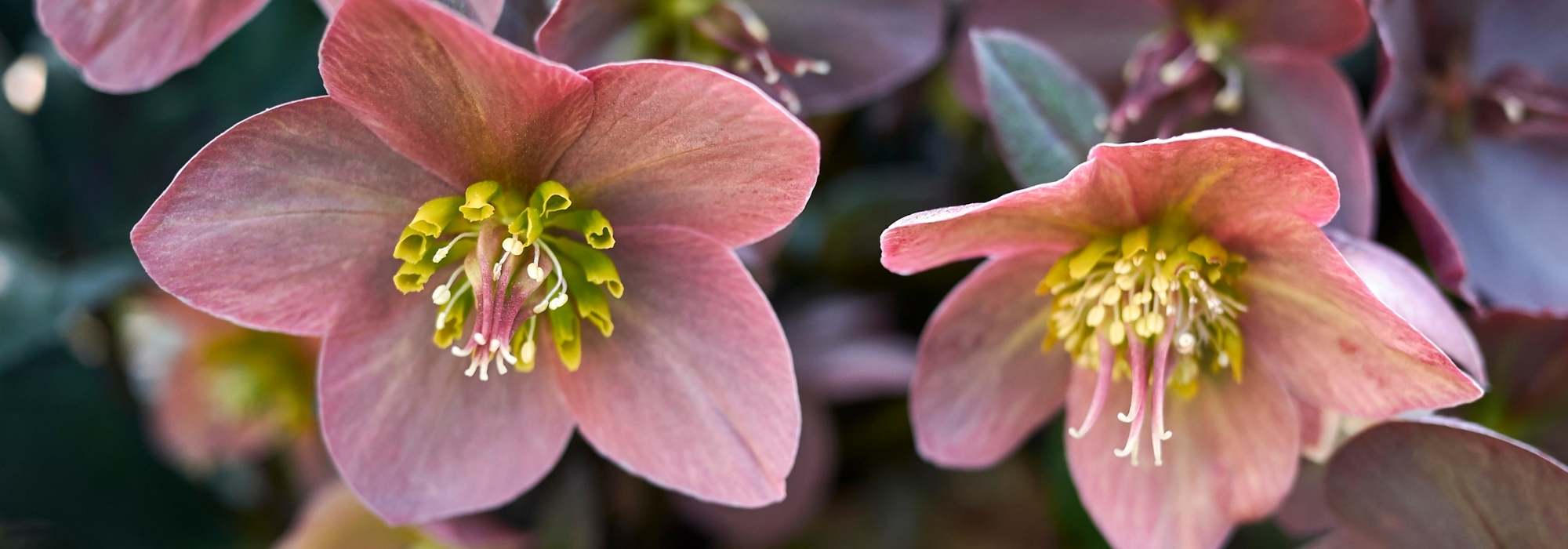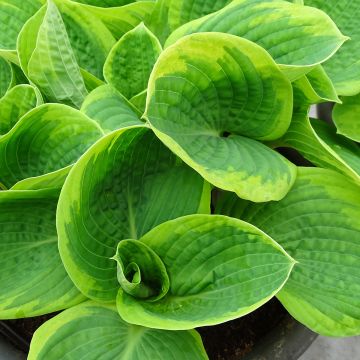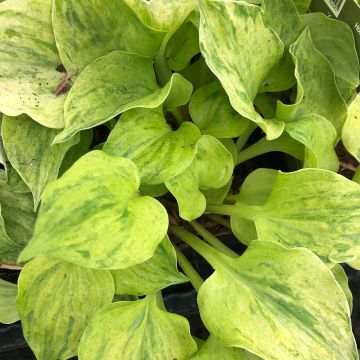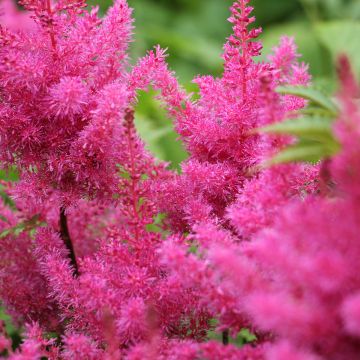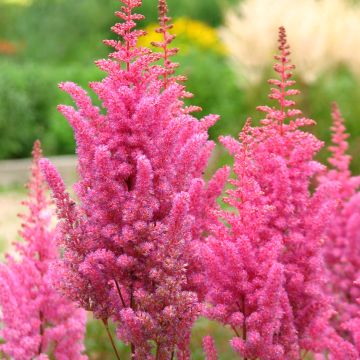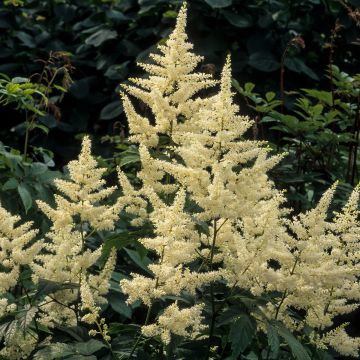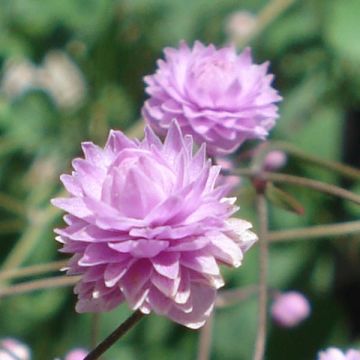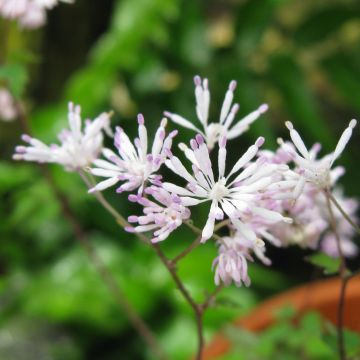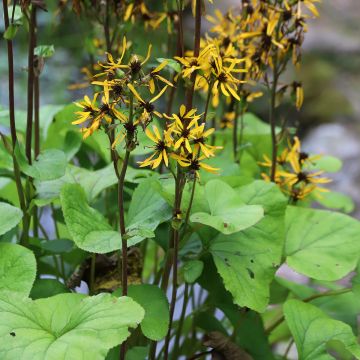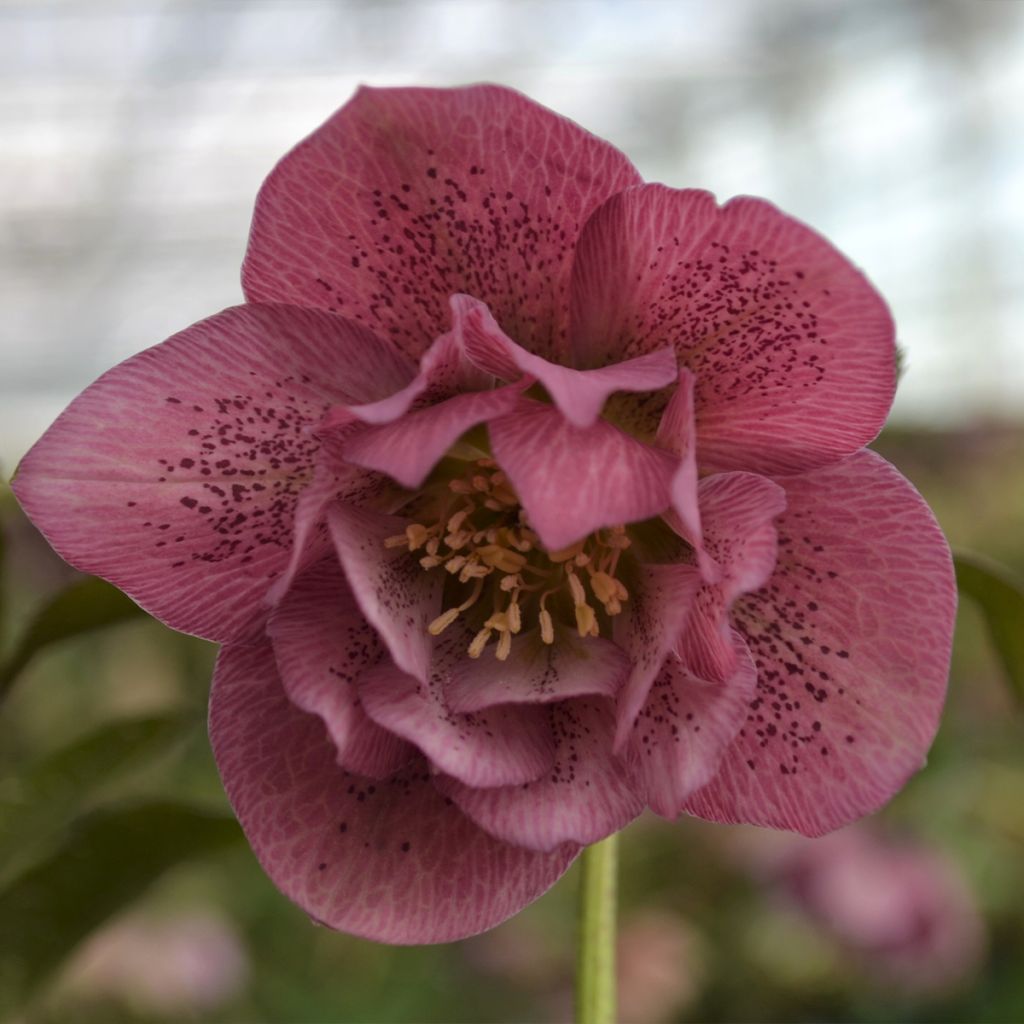

Hellébore ViV® Alessia - Helleborus orientalis
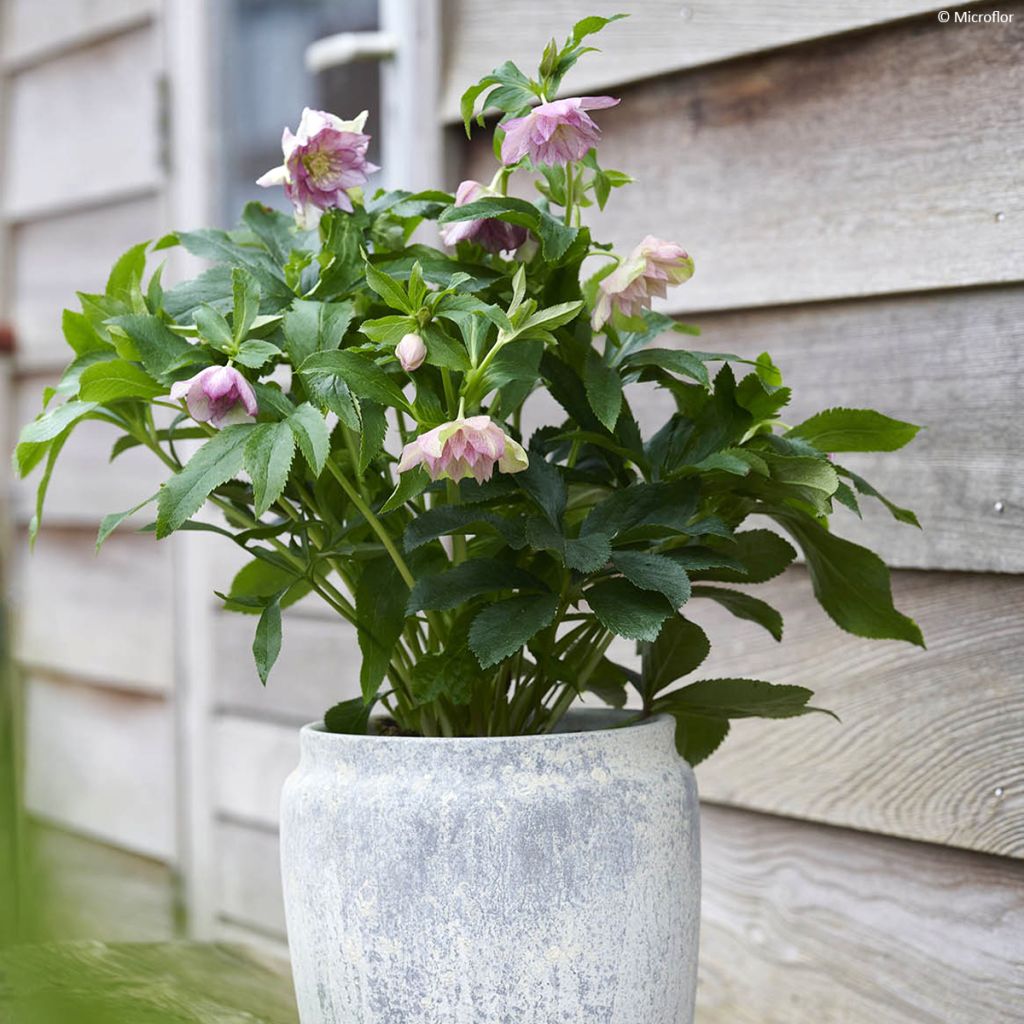

Hellébore ViV® Alessia - Helleborus orientalis
Helleborus hybridus ViV Alessia
Helleborus x hybridus ViV® Alessia
Lenten Rose, Oriental Hellebore
Lovely plant. After a traumatic journey (cracked pot and half empty...), I repotted it in a suitable pot. Now, I'm eagerly awaiting the flowering...
Françoise, 10/10/2024
Special offer!
Receive a €20 voucher for any order over €90 (excluding delivery costs, credit notes, and plastic-free options)!
1- Add your favorite plants to your cart.
2- Once you have reached €90, confirm your order (you can even choose the delivery date!).
3- As soon as your order is shipped, you will receive an email containing your voucher code, valid for 3 months (90 days).
Your voucher is unique and can only be used once, for any order with a minimum value of €20, excluding delivery costs.
Can be combined with other current offers, non-divisible and non-refundable.
Home or relay delivery (depending on size and destination)
Schedule delivery date,
and select date in basket
This plant carries a 12 months recovery warranty
More information
We guarantee the quality of our plants for a full growing cycle, and will replace at our expense any plant that fails to recover under normal climatic and planting conditions.

Does this plant fit my garden?
Set up your Plantfit profile →
Description
Oriental Hellebore Alessia is one of the earliest varieties in the ViV collection, flowering from September to October. This Lenten Rose forms a compact clump and can be planted in pots or in the ground, decorative all year round with its evergreen, dark green, cut foliage. The dark background enhances the double flowers, which are a mixture of pink and cream with yellow stamens at their centre. It is a robust and hardy perennial, easy to grow in all regions, even in heavy soil, although it prefers humus-rich soil. It will create beautiful borders in shaded areas, it dislikes direct sunlight.
ViV Hellebores are varieties obtained through in-vitro multiplication. Unlike varieties obtained through seed, in-vitro hellebores guarantee flowers that are exactly identical to the parent variety. They have the same genetic characteristics as the mother plant, are more vigorous, and develop uniformly.
Oriental Hellebore Viv Alessia belongs to the Ranunculaceae family, which includes around sixty genera and approximately 2500 species, mostly herbaceous. There are many ornamental plants with remarkable flowering, such as Anemones, Ranunculus, Cimicifuga, Columbines, and many others, including Clematis with their numerous flowering cultivars. Helleborus orientalis is native to Greece, Turkey, and the central and eastern Caucasus. It is a perennial plant that easily hybridizes with other species, resulting in hybrids with varied colours and forms. These hybrids are rarely given specific names and are instead distinguished by their shape and colour. Oriental Hellebore is a hardy plant that can withstand temperatures as low as -15°C and naturally grows in forests, thickets, and clearings up to an altitude of 2000 m (6562ft).
Alessia forms a compact clump that reaches a height of 35 to 45 cm (14 to 18in) and a width of about thirty centimetres. It thrives in light shade under deciduous trees or even in dense shade, such as that found in woodland. Its foliage consists of palmate, slightly toothed, dark green, shiny basal leaves. These leaves are evergreen although they only live for about 8 months and are regularly replaced by new leaves. Alessia is an exceptionally early variety that flowers from late summer, starting in September, and continues for several weeks, much earlier than most other Oriental Hellebore varieties. The flowers are double, with small narrow petals in the centre and larger petals forming a spreading outer crown. These medium-sized flowers are pink mixed with cream-white, some petals have a dark red central vein. With their yellow stamens, these flowers have a certain charm and stand out well against the dark foliage. The flowers are facing downwards, allowing water to slide off like an umbrella to protect the flower's centre from rotting. Hellebores do not like to be moved once established, and young plants may take some time to flower. Therefore, it is important to choose their planting location carefully.
Hellebores are remarkable plants with their flowering period differing from most other perennials. They allow for almost year-round blooming in borders mixing low shrubs and shade-tolerant perennials. Explore the rich family of Ranunculaceae, including Hellebores with winter flowering. There are numerous varieties available with white, green, pink, red, or even purple flowers, such as the wonderful Oriental Hellebore Luisa. For early spring, plant the surprising Trillium flexipes with its scuptural white flowers, followed by the charming Columbines with equally astonishing and sculptural flowers. Then, in summer, Aconitum Purple Sparrow produces graceful purple flower spikes, later replaced by Anemone hupehensis var.japonica with pretty, single, deep pink flowers with a golden centre, blooming from late August to early October, completing the cycle of seasons.
Helleborus hybridus ViV Alessia in pictures
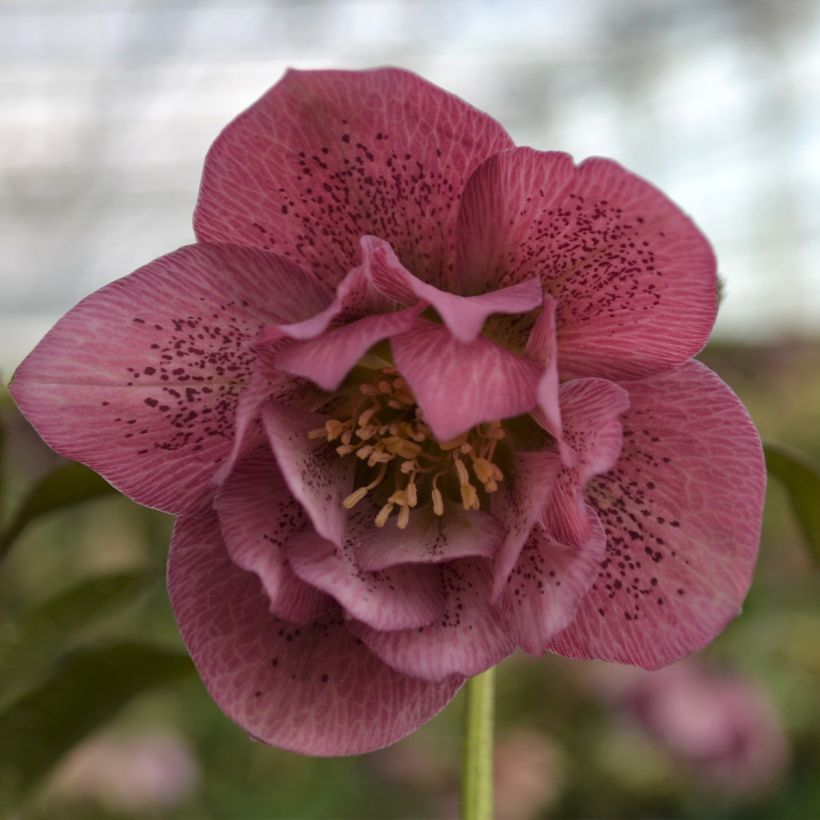

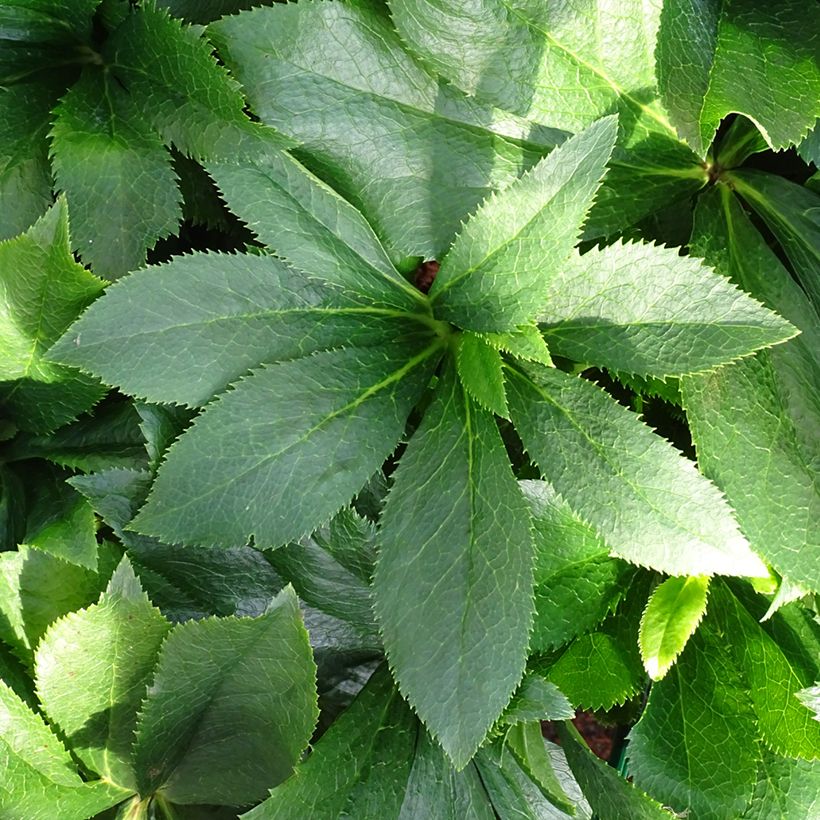

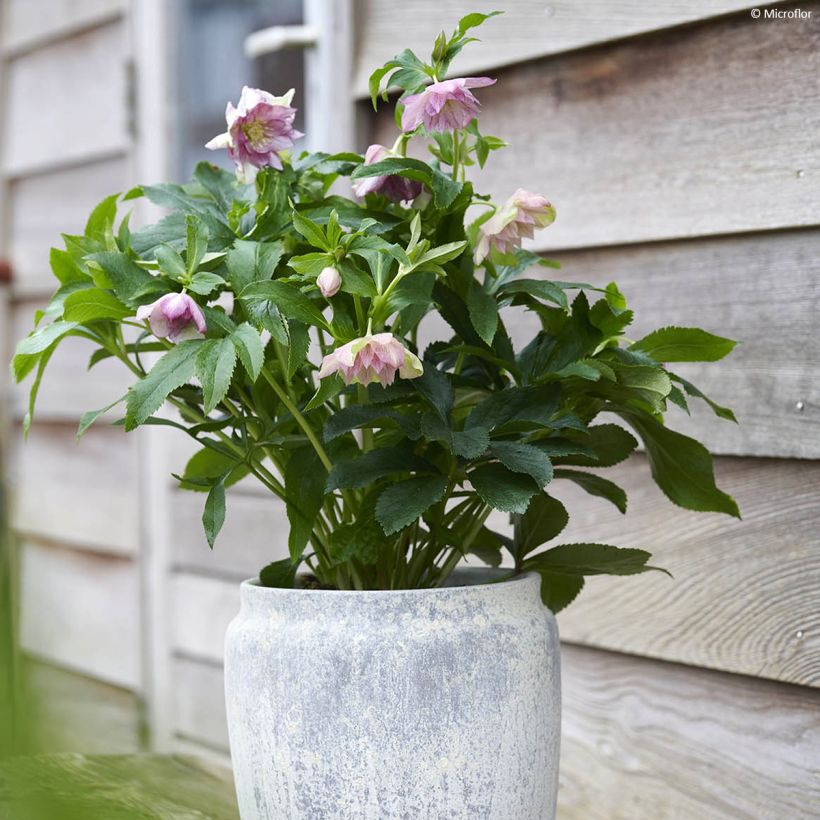

Flowering
Foliage
Plant habit
Botanical data
Helleborus
x hybridus
ViV® Alessia
Ranunculaceae
Lenten Rose, Oriental Hellebore
Cultivar or hybrid
Planting and care
Oriental Hellebore Alessia grows in any neutral to moderately limestone, rich, light or clayey soil, in partial or light shade, sheltered from cold and dominant winds. Avoid direct sunlight during the hottest hours in the south. This perennial should be planted from early autumn to spring. It thrives in deeply cultivated soil mixed with organic matter. Use bone meal or another organic fertilizer to feed. Water well after planting and add a layer of mulch 2 to 5 cm (1 to 2in) thick. Regularly remove faded leaves to improve flowering. Ensure a planting distance of 30 to 40 cm (12 to 16in) between each plant to promote their development. Hellebore does not tolerate stagnant water as it may cause it to rot.
The roots should not completely dry out in summer. Hellebores can be affected by a fungal disease transmitted by aphids, called black spot. Remove the spotted leaves from evergreen species when flower buds appear. Remove faded flowers after seeding. They can also suffer from grey rot or die from collar rot due to poor growing conditions, in excessively wet situations.
On a balcony or terrace, plant this perennial in a pot 4 to 5 times larger than its size, as it needs space to develop its root system. This Hellebore can withstand temperatures down to -15°C (5°F) or even lower, allowing it to adapt to almost all regions.
Planting period
Intended location
Care
Planting & care advice
-
, onOrder confirmed
Reply from on Promesse de fleurs
Similar products
Haven't found what you were looking for?
Hardiness is the lowest winter temperature a plant can endure without suffering serious damage or even dying. However, hardiness is affected by location (a sheltered area, such as a patio), protection (winter cover) and soil type (hardiness is improved by well-drained soil).

Photo Sharing Terms & Conditions
In order to encourage gardeners to interact and share their experiences, Promesse de fleurs offers various media enabling content to be uploaded onto its Site - in particular via the ‘Photo sharing’ module.
The User agrees to refrain from:
- Posting any content that is illegal, prejudicial, insulting, racist, inciteful to hatred, revisionist, contrary to public decency, that infringes on privacy or on the privacy rights of third parties, in particular the publicity rights of persons and goods, intellectual property rights, or the right to privacy.
- Submitting content on behalf of a third party;
- Impersonate the identity of a third party and/or publish any personal information about a third party;
In general, the User undertakes to refrain from any unethical behaviour.
All Content (in particular text, comments, files, images, photos, videos, creative works, etc.), which may be subject to property or intellectual property rights, image or other private rights, shall remain the property of the User, subject to the limited rights granted by the terms of the licence granted by Promesse de fleurs as stated below. Users are at liberty to publish or not to publish such Content on the Site, notably via the ‘Photo Sharing’ facility, and accept that this Content shall be made public and freely accessible, notably on the Internet.
Users further acknowledge, undertake to have ,and guarantee that they hold all necessary rights and permissions to publish such material on the Site, in particular with regard to the legislation in force pertaining to any privacy, property, intellectual property, image, or contractual rights, or rights of any other nature. By publishing such Content on the Site, Users acknowledge accepting full liability as publishers of the Content within the meaning of the law, and grant Promesse de fleurs, free of charge, an inclusive, worldwide licence for the said Content for the entire duration of its publication, including all reproduction, representation, up/downloading, displaying, performing, transmission, and storage rights.
Users also grant permission for their name to be linked to the Content and accept that this link may not always be made available.
By engaging in posting material, Users consent to their Content becoming automatically accessible on the Internet, in particular on other sites and/or blogs and/or web pages of the Promesse de fleurs site, including in particular social pages and the Promesse de fleurs catalogue.
Users may secure the removal of entrusted content free of charge by issuing a simple request via our contact form.
The flowering period indicated on our website applies to countries and regions located in USDA zone 8 (France, the United Kingdom, Ireland, the Netherlands, etc.)
It will vary according to where you live:
- In zones 9 to 10 (Italy, Spain, Greece, etc.), flowering will occur about 2 to 4 weeks earlier.
- In zones 6 to 7 (Germany, Poland, Slovenia, and lower mountainous regions), flowering will be delayed by 2 to 3 weeks.
- In zone 5 (Central Europe, Scandinavia), blooming will be delayed by 3 to 5 weeks.
In temperate climates, pruning of spring-flowering shrubs (forsythia, spireas, etc.) should be done just after flowering.
Pruning of summer-flowering shrubs (Indian Lilac, Perovskia, etc.) can be done in winter or spring.
In cold regions as well as with frost-sensitive plants, avoid pruning too early when severe frosts may still occur.
The planting period indicated on our website applies to countries and regions located in USDA zone 8 (France, United Kingdom, Ireland, Netherlands).
It will vary according to where you live:
- In Mediterranean zones (Marseille, Madrid, Milan, etc.), autumn and winter are the best planting periods.
- In continental zones (Strasbourg, Munich, Vienna, etc.), delay planting by 2 to 3 weeks in spring and bring it forward by 2 to 4 weeks in autumn.
- In mountainous regions (the Alps, Pyrenees, Carpathians, etc.), it is best to plant in late spring (May-June) or late summer (August-September).
The harvesting period indicated on our website applies to countries and regions in USDA zone 8 (France, England, Ireland, the Netherlands).
In colder areas (Scandinavia, Poland, Austria...) fruit and vegetable harvests are likely to be delayed by 3-4 weeks.
In warmer areas (Italy, Spain, Greece, etc.), harvesting will probably take place earlier, depending on weather conditions.
The sowing periods indicated on our website apply to countries and regions within USDA Zone 8 (France, UK, Ireland, Netherlands).
In colder areas (Scandinavia, Poland, Austria...), delay any outdoor sowing by 3-4 weeks, or sow under glass.
In warmer climes (Italy, Spain, Greece, etc.), bring outdoor sowing forward by a few weeks.






























